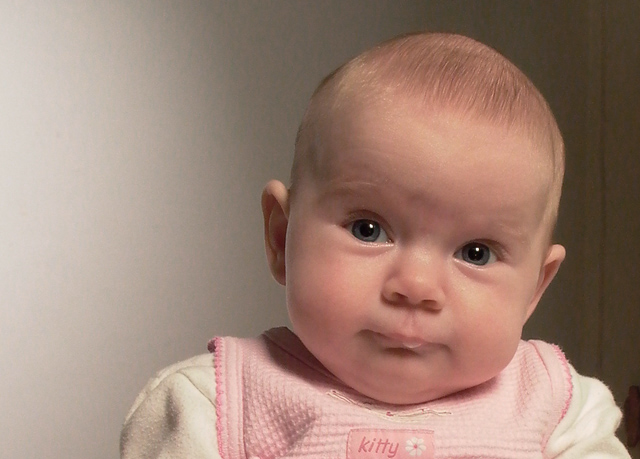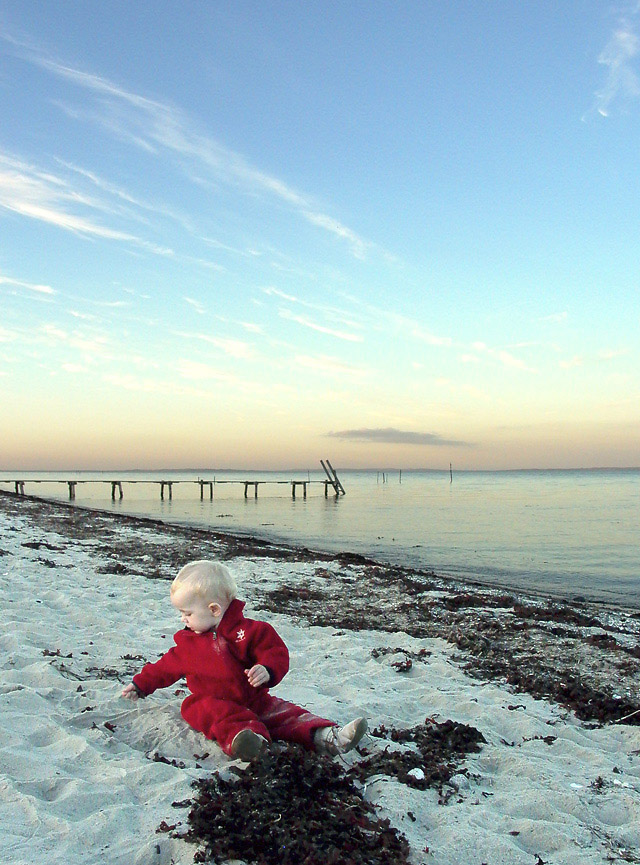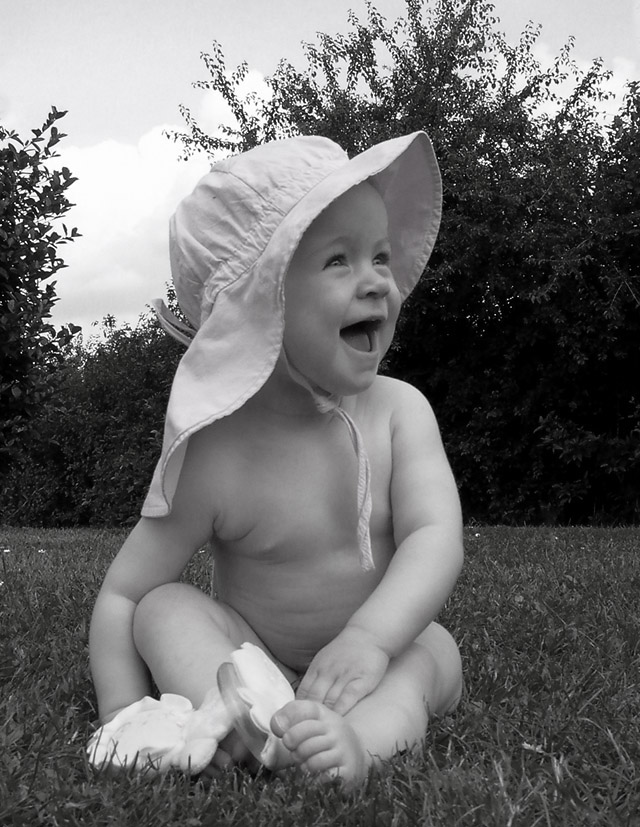|
What is "Silent Birth" [Quiet Birth]
This is a subject I can talk about with some authority as all my three kids were born by "Silent Birth" (or "Quiet Birth"). The subject has raised some questions after Tom Cruise and Katie Holmes have told about it. Also Kelly Preston and John Travolta are to have their baby in 2010, born by "Silent Birth." So what is it, exactly?

In the book, Dianetics, L. Ron Hubbard writes that for the benefit of the mother and child, silence should be maintained during childbirth, insofar as possible. This is because any words spoken can have an aberrative effect on the mother and the child. The concept is explained in Dianetics: The Modern Science of Mental Health and Child Dianetics.
This is something that the prospective mother should go over with her doctor ahead of time to agree on the procedure. Many hospitals are familiar with the practice and will cooperate in eliminating any extraneous noise and unnecessary talking during the delivery.
The idea of a silent birth is consistent with a number of texts on the subject. Internationally acclaimed obstetrician and author Frederick Leboyer specifically wrote that people speaking loudly in the delivery room was "So profoundly wrong ... These loud outbursts upset the mother more than help her... Those who assist in deliveries must learn this new silence. They too must be prepared to receive the child with care and respect."
And Dr. Thomas Verny, author of the 1981 text The Secrets of an Unborn Child, after a six year international study, wrote: "...the unborn child is a feeling, remembering, aware being, and because he is, what happens to him - what happens to all of us - in the nine months between conception and birth molds and shapes personality, drives and ambitions in very important ways."
Above all, children should receive a loving, caring environment.
Twin birth as "Silent Birth"
My first two kids, Oliver and Caroline, were born in 1996. As twins, born 14 minutes after each other, it wasn't the ordinary birth most people will experience. In the room was 12 people (!) as there was two midwifes*, one person to take each baby after birth to measure and check them, several doctors in case a cesarean section would be needed, some to administer eventual need of drugs plus some students that acted as bystanders.
(*=In Denmark a midwife is a specially educated nurse who consult the mother and father during pregnancy and who is also present during birth. Not so many years ago only the midwife would be present at a birth at home or at the hospital. In case something was wrong, they would rush the mother to a hospital where a doctor would be present for an immediate cesarean section. These days – where most births take place in hospitals - the doctor and the midwife works together. This is different than other countries such as USA where it is a doctor who is the contact person and the one delivering at a hospital. One reason is tradition, another is that the one delivering the baby must have proper insurance to meet eventual errors and legal actions).
As the parents, our instructions to the team was "to keep as quiet as possible." As you can imagine, having twelve people keep quiet isn't easy. Just the fact that most of them join in few minutes before the actual birth starts make it impossible to instruct all. The outcome therefore was that very quiet excitement and some whispering.
There were of course no drugs involved as any drugs the mother gets, the child gets also. So if the mother is drugged before the actual birth, while she is delivering and experience the effects of drugs for hours after the birth, the child will as well. "I was born stoned," need I say more?
It is not as if you are not offered drugs. Some hospitals push drugs, others try to avoid them. A vivid discussion is ongoing amongst midwifes and nurses on the subject of drugs. But the general rule in Danish hospitals is that it is there and what you ask for, you get – unless a doctor says different for medical reasons.

Planned cesarean section as "Silent Birth"
My third child, Robin, was born by cesarean section. cesarean section birth can take place either as a bypass of normal routines in case the child suddenly turns around or something else risks the life of the child. But cesarean section also takes place as "Planned cesarean section" when the parents express a wish to do so or the doctor recommends it.
 |
Caroline, one of the twins. |
In the case of Robin she had turned around days before and we thanked no to get her turned around as it involved massive pressure and they anyway in 50% of the cases turn back around. We had planned birth at home in a large bath but had to change plans towards a cesarean section at the hospital as a natural birth would be out of the question – especially at home.
So with Robin we knew a day in advance that she would be born right after noon the following day. Which was handy because the Crown Prince presented his new fiancee at noon that very day. So we actually saw that on television in the hospital and then went down the hall to the room where the cesarean section would be performed.
This time we had given the doctor the Illustrated Dianetics picture book which very simply and brief over 12-15 pages explains the principles that make a "Silent Birth" a very good idea. He totally got that no words was to be spoken during birth and instructed the mother before he started: "So I have read this and I fully understand that silence is needed. So I just want to let you know before we start, what will happen so I don't have to speak during the birth. I will need so say something during the actual birth though, and that will be 'push' to my assistant so that he can push the baby when I have done the cesarean section cut."
In fact the doctor didn't even say "push" during the birth, so the sound present was a single nurse (who administered drugs) who chatted and couldn't get why nobody chatted back to her. So again: If you want a silent birth, make sure everybody gets the instruction, why, and what "silent" actually means (as little sound as possible and as few spoken words as possible), that is is mainly for the child and not the mother (the mother was offered headphones with music as a response to silent birth; the nurse thought she didn't like noise).
It is difficult, because many people automatically talk a lot when they get stressed or nervous or something happens: It is a common thing to help people by talking to them.
So do the instruction in advance, do it to all and do it in a way so people get the idea. And also make them understand that whatever needs to get said, is ok to say. But it is not a brunch table.
Practical experiences with "Silent Birth"
A good thing is that in our town which by international measures is small - 250,000 citizens – the doctors and nurses know more and more about what "Silent Birth" is now that they have done it many times. There is only two doctors delivering cesarean section birth in this town and they now both know the drill cold. And generally we hear that birth here around gets more and more silent these days. It simply is logical that it can't hurt to be quiet and respectful, even if the parents haven't expressed a wish for it.

Oliver & Caroline Overgaard, 2004
As the twins are now getting older (fast I might add) one can see how they do in life compared to their friends and classmates. There is the persons basic personality and everything involved in growing up, so "Silent Birth" isn't the only factor in a child's life. But giving your child a "Silent Birth" you make sure they get a good start. As for my twins, they are the best in their class in school and in general is friendly and helpsome to other people. Oliver is very outreaching with new people and is the one who open doors to new friendships. Caroline is the more thoughtful and will – they will both in fact – ask interested questions to anybody without hesitating. They are very in their own personality, him being very boy and she being very female.

Caroline modelling, July 2010

Oliver, October 2010.
Robin was born very easily without – I'm convinced – any pain and almost as "Silent Birth" as can be and is quite an interesting child both to us and to the people who meet her. She is a very fast learner who will usually learn by observing older children or grownups for a while – and then copy it herself flawless. Going to town or shopping she will spend a lot of time observing people and often gets in commutation with kids and adults by walking over to them and hugging them. She has an extraordinary ability to spot people – some people get a big hug and smile, others she doesn't go near. She hasn't been really sick in her first two years and have had no accidents as falling down, hardly ever gets upset or sad, etc. If you read Dianetics you will understand how this relates to "Silent Birth"
Well, of course I could go on about my kids. But the bottom line is this: "Silent Birth" is something you do to avoid aberrations as described in Dianetics, thus ruling out a lot of psychosomatic illnesses amongst other things. It simply is a way to make life easier for the baby and during childhood. It makes a stable child who do good in life. It makes a happier baby, child and family life.

Robin Isabella Overgaard

Robin Isabella in April 2006 getting a haircut. She's a small diva, as you can see.

Robin on the phone with her sister, September 2010
.
Also, in the weeks up to the 2006 birth of Suri Cruise, the daughter of Tom Cruise and Katie Holmes, there was so many questions as to what Quiet Birth or Silent Birth was, that the Church of Scientology published an official statement answering most of these questions. You can still read it here: https://www.scientologyparent.com
Link to official Church of Scientology newsrelease on "What Is Silent Birth?"
Thorsten Overgaard, November 2005
Updated September 2010
|
![]()